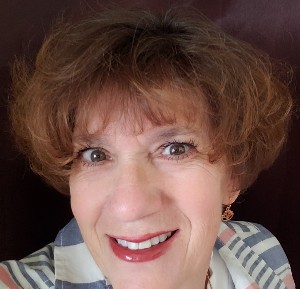Debbi Thues, aged 65, has been a fan of reverse mortgages for 30 years. She bought her first home when she was 28 and started mapping out her future at different life stages.
She was making good money as a risk manager for a medical malpractice firm – “I basically advised doctors how not to get sued” – and was reading about mortgages and how they could be used in different ways to reduce her tax liability or help her plan for her eventual retirement.

The plan all along was to get a reverse mortgage by her mid-60s. The concept of living off the home equity that she had accumulated over many decades was appealing.
She tried to convince her parents, who lived in Fullerton, CA and were married for 55 years, to think about a reverse mortgage in their retirement years, but they were not as enthused.
In 2012, Debbi’s mother passed away and in 2015, her father’s health started to decline. Robert Thues, who was then 86, had been a sheet metal journeyman. “Toward the end of his career he would make these beautiful copper roofs,” says Debbi.
He had always enjoyed water-skiing, but when he was in his 30s, he had a terrible accident that severely damaged his pancreas, which regulates your blood sugar. He would soon develop Type 1 diabetes. Fifty years later, those injuries caught up with him and he began to suffer from dementia and his diabetes worsened. His doctor broke the news to Debbi that her father would need 24/7 care from then on.
The care that Robert needed cost $6,000/month. While he had a nice pension on top of Social Security, it would not come close to covering those costs.
“I needed a reverse mortgage to support his 24/7 care,” says Debbi. She started reading as much as she could, but she didn’t know anybody who offered them.
While all this was going on, Debbi was creating a trust to protect her father’s assets. She mentioned the idea of a reverse mortgage to her accountant. The accountant referred Debbi to an attorney who could help file the trust. The attorney recommended Angella Conrard, CRMP, a reverse mortgage specialist based in San Clemente, CA. And then Angella referred Debbi to an elder care specialist, who recommended a care facility for her father later on down the road.
“This is important, because it shows how professional networks can help you get in touch with the right people,” says Debbi.
Acting as her father’s Power of Attorney, Debbi had a long conversation with Conrard to discuss her father’s situation and whether a reverse mortgage could help. Debbi also met with a HUD-approved housing counselor who offered additional information about reverse mortgages, answered Debbi’s questions and shared alternative options. However, it was quite clear to Debbi that the only option to pay for her father’s in-home care was a reverse mortgage, so once the counseling was finished, she immediately contacted Conrard to begin the application process.
Robert’s home appraised for $475,000. The reverse mortgage proceeds paid off an existing $100,000 home equity line of credit that Robert had gotten a few years earlier. Debbi accessed an additional $88,000 to make some home repairs and upgrades and to start paying for her father’s in-home care and prescription drugs.
Because the reverse mortgage funds would eventually run out, the plan all along was to put her father’s home up for sale shortly after the loan closed knowing it would take time to sell.
Within six months, the home sold and the sales proceeds were used to pay off the reverse mortgage. Her father was transferred to a facility where he would continue to receive the care he needed. “The reverse mortgage was a lifesaver for my dad,” she says.
Fast forward to 2020 and Debbi started thinking about reverse mortgages again because she was turning 65.
Back in 2001, Debbi suffered a debilitating illness that forced her to go on disability. “It was a big change going from a six-figure salary down to $30,000 a year, but I adjusted,” says Debbi.
She was receiving two disability checks every month, one from Social Security and another through private insurance. The private policy was scheduled to stop when she turned 65, so the reverse mortgage became an important component of her retirement plan.
Debbi owns a home in Lake Arrowhead, CA, a small community nestled in the majestic mountains of the San Bernardino National Forest.
Debbi contacted Angella Conrard again, but Angella informed her that she had stopped originating reverse mortgages a few years earlier. Debbi contacted another lender, but then COVID-19 hit and there were delays in getting her loan started. A few months went by and then out of the blue Debbi was contacted by Angella, who informed her that she had gotten back into the reverse mortgage business.
“Angella was amazing,” says Debbi, “because she got things done.” Debbi’s home appraised for $850,000, which allowed her to pay off a $250,000 mortgage and still have $140,000 left over in a line of credit.
“That’s my nest egg,” she says. “I can live off the Social Security but having that reverse mortgage line of credit is a real comfort for when emergencies arise.”
Because a lot of her friends are turning 65, she’s recommending that they also consider a reverse mortgage too. “Many of them have aging parents who need help just like my dad,” says Debbi. “I am letting them know a reverse mortgage may not only help them but their moms and dads too.”